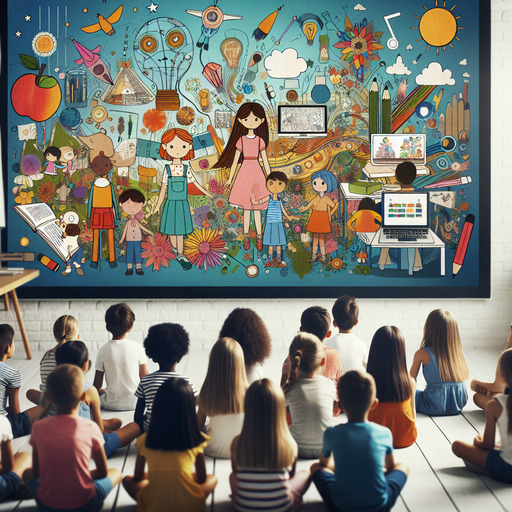
-
Table of Contents
Unlock the power of storytelling in educational videos and make learning unforgettable! Discover expert tips and strategies now. Learn More
Introduction
Storytelling in educational videos is a powerful tool that transforms traditional learning into an engaging and memorable experience. By weaving narratives into educational content, educators can capture students’ attention, foster emotional connections, and enhance comprehension and retention of information. This approach leverages the natural human affinity for stories, making complex concepts more relatable and easier to understand. Effective storytelling in educational videos involves clear structure, relatable characters, and compelling plots that align with the learning objectives. By integrating these elements, educators can create immersive learning experiences that not only inform but also inspire and motivate students.
Storytelling In Educational Videos: How To Make Learning Memorable
Storytelling in educational videos has emerged as a powerful tool to make learning memorable. By weaving narratives into educational content, educators can engage students more effectively, making complex concepts easier to understand and retain. The integration of storytelling into educational videos is not merely about adding entertainment value; it is about creating a structured and relatable context that enhances comprehension and retention.
One of the primary reasons storytelling is so effective in educational videos is its ability to capture attention. In an age where distractions are abundant, holding a learner’s focus is a significant challenge. Stories naturally draw people in, creating a sense of curiosity and emotional investment. When students are emotionally engaged, they are more likely to pay attention and absorb the material being presented. This emotional connection is crucial because it transforms passive learning into an active experience.
Moreover, storytelling aids in the organization of information. Educational content can often be dense and overwhelming, but when presented within a narrative framework, it becomes more digestible. Stories have a clear structure with a beginning, middle, and end, which helps in breaking down complex information into manageable segments. This structure not only makes the content easier to follow but also aids in memory retention. When students can see how different pieces of information fit together within a story, they are more likely to remember and understand the material.
In addition to organizing information, storytelling in educational videos also provides context. Contextual learning is essential because it helps students see the relevance of what they are learning. When concepts are presented within a story, students can see how they apply in real-world scenarios. This practical application makes the learning experience more meaningful and memorable. For instance, a lesson on environmental science can be more impactful when framed around a story of a community dealing with pollution, rather than just presenting facts and figures.
Furthermore, storytelling can cater to diverse learning styles. Different students have different ways of processing information; some are visual learners, while others may be auditory or kinesthetic learners. Stories can incorporate various elements such as visuals, sounds, and actions, making the content accessible to a broader audience. By appealing to multiple senses, storytelling ensures that more students can connect with the material in a way that suits their learning preferences.
Another significant advantage of using storytelling in educational videos is the development of critical thinking skills. Stories often present problems and challenges that characters must overcome, encouraging students to think critically and solve problems. This aspect of storytelling not only makes the learning process more engaging but also helps students develop essential life skills. By analyzing the decisions and actions of characters within a story, students can learn to apply similar critical thinking and problem-solving skills in their own lives.
In conclusion, storytelling in educational videos is a highly effective strategy for making learning memorable. By capturing attention, organizing information, providing context, catering to diverse learning styles, and fostering critical thinking, storytelling transforms educational content into an engaging and impactful experience. As educators continue to explore innovative ways to enhance learning, the integration of storytelling into educational videos stands out as a powerful approach that can significantly improve student engagement and retention.
Q&A
1. **How can storytelling enhance the effectiveness of educational videos?**
Storytelling can enhance the effectiveness of educational videos by making the content more engaging and relatable, helping to simplify complex concepts, and improving retention and recall by connecting information to emotions and experiences.